Luftwaffe’s Naval Operations (1919-1945)
 A complete overview of the Luftwaffe in coastal and naval operations, organization, tactics, land and sea models, relations with the Kriegsmarine.
A complete overview of the Luftwaffe in coastal and naval operations, organization, tactics, land and sea models, relations with the Kriegsmarine.
The Luftwaffe (Generic)
 The Luftwaffe, forbidden by the treaty of Versailles in 1919 was gradually rebuilt, mostly in secret and through the pretext of civilian purposes before and after 1933 at a frantic pace. In September 1939 it was one of the world’s best ald largest arguably, although numerically matched by the combined French and British aviations, or in the east by Soviet Aviation (VVS) which compensated in quality what it lacked in quality. Blessed by excellent engineers and a network of experienced manufacturers, the aviation could develop rapidly in areas related to a quick war, with fighters (Me 109), escort fighters (Me 110), dive bombers (Ju 87) for precision attacks and medium bombers (Do 17, He 111) for standard attacks.
The Luftwaffe, forbidden by the treaty of Versailles in 1919 was gradually rebuilt, mostly in secret and through the pretext of civilian purposes before and after 1933 at a frantic pace. In September 1939 it was one of the world’s best ald largest arguably, although numerically matched by the combined French and British aviations, or in the east by Soviet Aviation (VVS) which compensated in quality what it lacked in quality. Blessed by excellent engineers and a network of experienced manufacturers, the aviation could develop rapidly in areas related to a quick war, with fighters (Me 109), escort fighters (Me 110), dive bombers (Ju 87) for precision attacks and medium bombers (Do 17, He 111) for standard attacks.
There were crucial areas that were forgotten, like modern transports (the fleet of Ju 52 was obsolete in 1940), and long range bombers (no quad-engine apart the civilian FW 200 was available), as both were not considered a priority for the Blitzkrieg as defined. And of course the poor child of the Heer, the Kriegsmarine was left out of aviation development, without any dedicated and independent air service unlike many countries. This situation was comparable to Italy.
This was not if the Kriegsmarine was completely deprived of dedicated marine planes: Dornier for example astonished the world in 1929 with its behemoth, the Dornier do X, world’s largest flying boats and largest plane. Helped by this media coup, the company was rapidly on the map, providing scores of supremely solid, all-metal patrol and SAR models, such as the Dornier Do J “Wal”, widely exported. Blohm & Voss, a naval yard, also brought its know how for seaplanes and flying both, with such models during WW2 as the massive BV 222 that took part the title of world’s largest aircraft. For the need or onboard observation, smaller models were created by mostly Arado, which provided the bulk of marine aviation small fleet.
But overall, the Kriegsmarine lacked, still, a proper naval aviation and even the fleets of flying boats and floatplanes used on coastal areas were submitted to the Luftwaffe, and coordination was required with the Navy. As in 1935 it was planned, in anticipation to the ambitious Plan Z, to create a serie of fleet aircraft carriers, and several types of dedicated types were designed. However KMS Graf Zeppelin was never completed and many conversion projects in WW2 failed to materialized. In most combined operations, the Kriegsmarine needed to communicate and plan with the Luftwaffe to achieve its objectives, but in practice they operated in full independence, some attack and bomber groups being used for antiship missions with success between the coast of Norway, the north sea and the Mediterranean, hunting down convoys (like those to Malta and the Musrmanks, which paid a heavy price).
There rare occasions that needed full cooperation and close communication with the Kriegsmarine were some amphibious operations requiring constant air cover, in addition to naval power to secure the safe passage of all the transports.
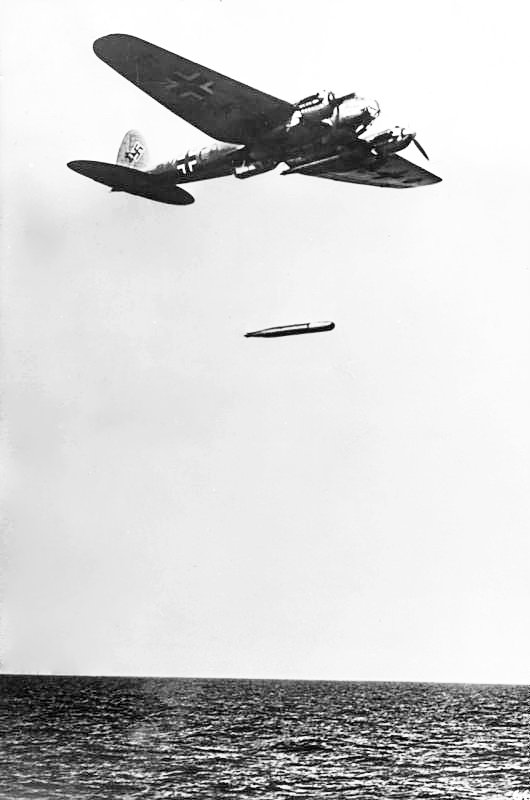
The Luftwaffe used the He 111H for anti-ship warfare, armed with two torpedoes.
Göring’s Luftwaffe has little place to the Navy
The Luftwaffe was created as a natural inheritance of the Luftreistkrafte of 1914. Soon placed at its head, Hermann Göring was a former (minor) ww1 ace, and in no haste to draw links with the Kriegsmarine. Both were completely strangers to naval matters, and prior to 1939 no serious attempt as ever made to create an independent naval force, for several obvious reasons:
-Created from 1933, the new Luftwaffe gave priority to continental aviation fit for quick “blitzkrieg” operations, in a context of limited credits to the Navy.
-Germany had no colonies and therefore no Empire to link and defend with its aviation.
-German access to the sea was limited to the Baltic and north sea coast, therefore had little needs but for patrols.
The Kriegsmarine itself had no independently attached naval aviation, although the Luftwaffe did planned and ordered seaplanes and floatplanes to care for its basic needs of patrol, reconnaissance, search and rescue. The weak Kriegsmarine was steps beyond many other naval powers in Europe and prioritized asymetric warfare, submarines and the use of commerce raiders, including for the limited military surface fleet.
The question of carrier-borne aviation
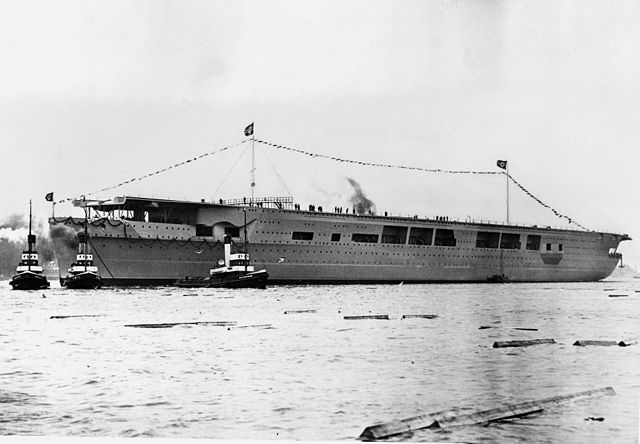
Hitler personally still favoured battleships, like most leaders of his generation, but trusted Admiral Raeder enough to carry out a project of fleet aircraft carriers, first of a serie which was part of plan Z, before it was abruptly stopped in September 1939, leaving the Navy with an unfinished program and unfinished aircraft carrier as well: The Graf Zeppelin. For her, considerable time and resources has been spent, including the creation of a dedicated carrier-borne air group, consisting of the following:
-Messerschmitt 109T
-Junkers 87G
-20 Fieseler Fi 167
Her sister ship, Flugzeugträger B, was laid down Germaniawerft Kiel, 1938 (Slipway 2) in 1938, but construction was stopped and cancelled in 1939.
As the war progressed, other planes were made for more improvized, cheaper aicraft carriers, while ideas to convert the battlecruisers Scharnhorst, Gneisneau or the remaining Panzerschiffe Admiral Scheer and Lützow were soon withdrawn. Focused turned istead, like Italy, to existing, roomier passenger ships and two incomplete cruisers. Note: They will be the object of a dedicated article.
- Kleiner Flugzeugträger (CVL): A cheaper alternative of Plan Z for a light carrier (6,000 tons) carrying up do 15 aircraft. They were planned with diesel engines, so likely to be used as escort carriers. Paper project only.
- Hilfsflugzeugträger II: The former French cruiser De Grasse was captured while in construction since 1938. In August 1942, it was considered to complete her as a light aircraft carrier. In February 1943 allied bombings and sabotages made the site dangerous and the project was cancelled.
- Europa: The former liner Europa (Hapag Lloyd) built in Blohm & Voss in 1927-29 was available for conversion. As the largest passenger ship in Germany she was selected in the 1942 auxiliary carrier program, but after a study, conversion planning was terminated in November 1942.
- Gneisenau: The passenger ship of this name was also available for the 1942 program, one of the three passenger ships selected for conversion as auxiliary carriers in 1942 (Project Jade). The study was completed in 13.05.1942, Wilhelmshaven chosen for it, but eventually terminated on 25.11.1942.
- Postdam: Third carrier selected in early 1942 for conversion, the North German Lloyd line’s ship for the far east became Project “Elbe”. Blohm & Voss was selected, but like the others, terminated after a study from November as a training aircraft carrier but stopped on 02.02.1943.
- Hilfsflugzeugträger Seydlitz: The last of the Hipper class heavy cruisers, KMS Seydlitz, launched in 1939 saw her construction stopped and in 1942 it ws decided to study her conversion as an auxiliary fleet carrier, project “Weser 1 “. From fall 1942 to spring 1943, turrets were removed, superstructure, and funnel, when Bremen was bombed and she was moved to Königsberg, but never completed.
Luftwaffe Naval Warfare
Organization
In September 1939, there was in effect a “naval aviation” in existence, as the 30 or so floatplanes carried by the various cruisers and battleships of the Kriegsmarine were -at least- managed by it, not the Luftwaffe. At the same time, the German coastal naval aviation was equipped with a variety of seaplanes and floatplanes used for reconnaissance, antiship (torpedo) attack, sea-minesweeping, and search and rescue (SAR) from several bases along the Baltic and North sea coast (see later).
-At operational level, dependent of the OKL was the only German naval air command, based in kiel (HQ), Luftkreis VI. There two naval air districts in effect, Luftgau I (Königsberg) for the baltic and Luftgau X (Hamburg) for the north sea. The OKL directorate for naval aviation was Luftwaffen Inspektion 8 which was disbanded in 1942. Before 1939, Konrad Zander was put in charge of Luftkreis VI, supporting the naval units in western operations (notably in Norway).
Among the precise naval units of the Luftwaffe were:
-Bordfliegergruppe 196
: Kampfgruppe zur besonderen Verwendung 108. Formed on 1.10.37, it operated from seven bases, plus three more later occupied. More
-Küstenfliegergruppen
: Coastal Combat units More
-Seeaufklärungsgruppen:
Naval Recce units More
-Kampfgeschwader:
Mostly ju-87 Stuka and ju-88/188 equipped units dedicated to antiship warfare. Comprised the III. Gruppe/Kampfgeschwader 100 and 1., 3./Kampfgeschwader 200.
More
During the interwar, many models were already developed for the civilian market, but many models entered cooperation with the Reichsmarine already in 1922. Production records were very limited. Nearly all great German manufacturers took part (like Heinkel, Dornier, Junkers, Arado) and more obscure ones like Blohm & Voss, Rohrbach, and Klemm. Here is the full list of “marine” planes of the Luftwaffe, many of which were no longer operational when WW2 broke out, hence the classification by dates.
Fliegerführer Atlantik
Fliegerführer Atlantik or “Flyer Command Atlantic” was a Luftwaffe naval air command dedicated to maritime patrol and maritime interdiction. So technically obliged to maintain a constant, narrow communication line with the Kriegsmarine. The air command fought exclusively in the Battle of the Atlantic. It was setup by Erich Raeder to destroy the sea communications of the United Kingdom and in February 1941, detached from the Oberkommando der Luftwaffe (OKL) by order of Adolf Hitler, agreed by Goering as “in support of the Kriegsmarine’s U-boat operations in the Atlantic”. Hermann Göring, however insisted it would stay under the operational control of the Luftwaffe, subordinated to Luftflotte 3 (Hugo Sperrle). It had jurisdiction over all Luftwaffe operations in the Atlantic Ocean, English Channel and Irish Sea. Martin Harlinghausen was its first commander.
1941 saw considerable success, using notably the famed FW-200 Condor from Kampfgeschwader 40, and several models of recent flying boats, among which the Dornier 24, Heinkel 114 and BV 138. Such success were achieved, Prime Minister Winston Churchill referred to this command and its dreaded Focke-Wulf Fw 200 Condor, as the “scourge of the Atlantic”. The recently completed escort carrier HMS Audacity, first of the kind, was therefore equipped with Grumman Martlet fighters expressely to shoot them down. They did it so well that Raeder soon dispatched U-Boats especially to sink the small carrier designated as “prime target”.
By late 1942 however, British countermeasures started to bear fruit, as more, better and larger escort carriers were delivered, always equipped with fighters and a few Swordfish used for ASW warfare. As the battles in the Atlantic intensified in 1942-1943 the command made continuous demands for aircraft and crews, denied by the Luftwaffe, already fully committed on the Eastern front and other theatres. Between reconnaissance and anti-shipping operations nevertheless, Fliegerführer Atlantik both directed and covered U-boat transit through the Bay of Biscay and fighters were committed solely to combat the RAF Coastal Command. However, by 1944 allied supriority was such that the Fliegerführer Atlantik ceased to be effective and in April 1944, was disbanded, the remaining assets being merged into Fliegerkorps X (10th Flying Corps).
Luftwaffe’s all seaplanes and floatplanes
- Dornier Do A Libelle – sport flying boat (1921), used as prototype for liaison models
- Heinkel HE 1 – reconnaissance floatplane (1921)
- Caspar U1 Submarine-launched patrol seaplane (1922)
- Dornier Do J Wal – twin-engined flying boat used for military and commercial purposes (1922)
- Dornier DO X (civilian only, landmark)
- Dornier Do 16 – ‘Wal’ military flying boat (1923)
- Heinkel HE 2 – reconnaissance floatplane (1923)
- Junkers A 20/Ju 20 – single-engine military floatplane (1923)
- Rohrbach Ro II – transport flying boat (1923)
- Rohrbach Ro III – transport flying boat (1924)
- Dornier Do D – torpedo bomber floatplane (1924)
- Dornier Do E – reconnaissance flying boat (1924)
- Junkers G 24 – trimotor transport floatplane version (1924)
- Rohrbach Ro IV – transport flying boat (1925)
- Heinkel HD 14 – torpedo-carrying floatplane (1925)
- Heinkel HE 25 – single-seat reconnaissance floatplane (1925)
- Heinkel HE 26 – reconnaissance floatplane (1925)
- Heinkel HE 24 – floatplane trainer (1926)
- Heinkel HE 4 – floatplane (1926)
- Junkers W 33/34 – single-engine transport floatplane version (1926)
- Heinkel HE 5 – reconnaissance floatplane (1926)
- Rohrbach Ro VII Robbe – flying boat (1926)
- Rohrbach Ro V Rocco – twin-engined 10-passenger flying boat (1927)
- Heinkel HE 31 – reconnaissance floatplane (1927)
- Heinkel HE 8 – reconnaissance floatplane (1927)
- Arado W II – 2-seat twin-engine monoplane floatplane trainer (1928)
- Heinkel HD 9 – floatplane (1928)
- Heinkel HD 16 – torpedo-carrying floatplane (1928)
- Heinkel He 55 – reconnaissance flying boat (1929)
- Heinkel He 56 – reconnaissance floatplane (1929)
- Heinkel HE 12 – catapult-launched mailplane floatplane (1929)
- Heinkel He 57 – single-engine cabin amphibious flying boat (1929)
- Arado SSD I – biplane catapult-capable floatplane fighter (1930)
- Junkers Ju 52 – single- or three-engine transport floatplane version (1930)
- Heinkel HE 42 – seaplane trainer (1931)
- Heinkel He 50 – floatplane dive bomber version (1931)
- Heinkel He 59 – reconnaissance bomber floatplane (1931)
- Arado Ar 66 – training biplane floatplane variant (1932)
- Heinkel He 58 – catapult-launched mailplane floatplane (1932)
- Junkers Ju 46 – single-engine shipborne catapult-launched floatplane (1932)
- Klemm Kl 35bW – floatplane trainer
- Heinkel He 62 – reconnaissance floatplane (1932)
- Heinkel He 60 – reconnaissance floatplane (1933)
- Heinkel He 51 – floatplane fighter version (1933)
- Arado Ar 95 – two-seat coastal patrol and light attack floatplane (1937)
- Arado Ar 196 – two-seat shipboard and coastal patrol floatplane (1937)
- Arado Ar 199 – two-seat floatplane trainer (1939)
- -Arado ar 233 floatplane prototype (1942)
- Blohm & Voss Ha 139 – long-range mail, mine-sweeping and reconnaissance floatplane (1936)
- Blohm & Voss BV 138 – diesel trimotor, maritime patrol flying boat (1937)
- Blohm & Voss Ha 140 – twin-engine torpedo bomber/reconnaissance floatplane (1937)
- -Blohm & Voss BV 222 – Maritime transport flying boat (1938)
- Dornier Do 24 & Do 318 – three-engined maritime patrol/search and rescue flying boat (1937)
- Dornier Do 18 – four-seat coastal reconnaissance flying boat (1935)
- Dornier Do 26 – coastal patrol flying boat (1938)
- Dornier Do 22 – three-seat utility floatplane (1938)
- DFS Seeadler – sailplane flying boat (1936)
- -Fieseler Fi-167 (1938): Carrier-borne Torpedo bomber biplane
- Focke-Wulf Fw 58W – twin-engine trainer floatplane (1935)
- Focke-Wulf Fw 62 – single-engine reconnaissance floatplane (1937)
- Heinkel He 114 – shipboard biplane reconnaissance seaplane (1936)
- Heinkel He 115 – maritime reconnaissance floatplane (1936)
- Heinkel He 119 – high-speed reconnaissance floatplane version (1936)
-Blohm & Voss BV 238 – Six-engine transport floatplane (1942)
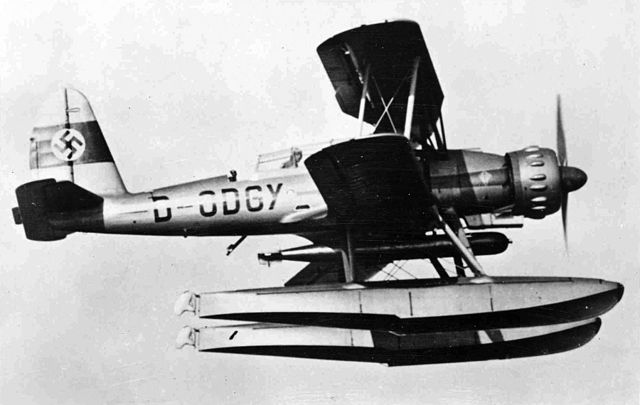
Arado 95 D-ODGY, testing aerial torpedoes
It made little doubt that the Luftwaffe in 1939 was probably the most effective air force in the world. It was almost dwarved by the Soviet aviation, but compensated in quality, tactics and organization, despite a very personal management by Goering. However there was no proper naval aviation, to the dismay of Raeder and later Dönitz. The few FW-200 Condors consented to the Kriegsmarine command proved invaluable in the Atlantic, until the allies manage to have a permanent air cover thanks to numerous “jeep carriers”. Goering had no intention to cede a part of his beloved Luftwaffe and in that matter, inter-service cooperation was non-existent, in a very similar way in Italy. More about the action of Condors in the north Atlantic: More on Military Aviation History
channel.
Despite of this, the Luftwaffe “coastal command” once Europe was occupied, installed bases along the French, Dutch and Norwegian coasts. There were seaplanes units in activity along the coast and in the Mediterranean. There was no shortage of models, while the rarest and largest (in fact record-beaters) were built by the naval yard Blohm & Voss. But their role revolved around patrol, SAR, transport, reconnaissance and sometimes attack. On the other hand, the Luftwaffe also sank many vessels during the war. The Junkers 88/188 and Ju 87 “Stuka”, both dive bombers, proved absolutely devastating. Later this was, modified Dornier 217 were fitted to carry the first airborne antiship missiles and sank several ships, including the Italian battleship Roma.
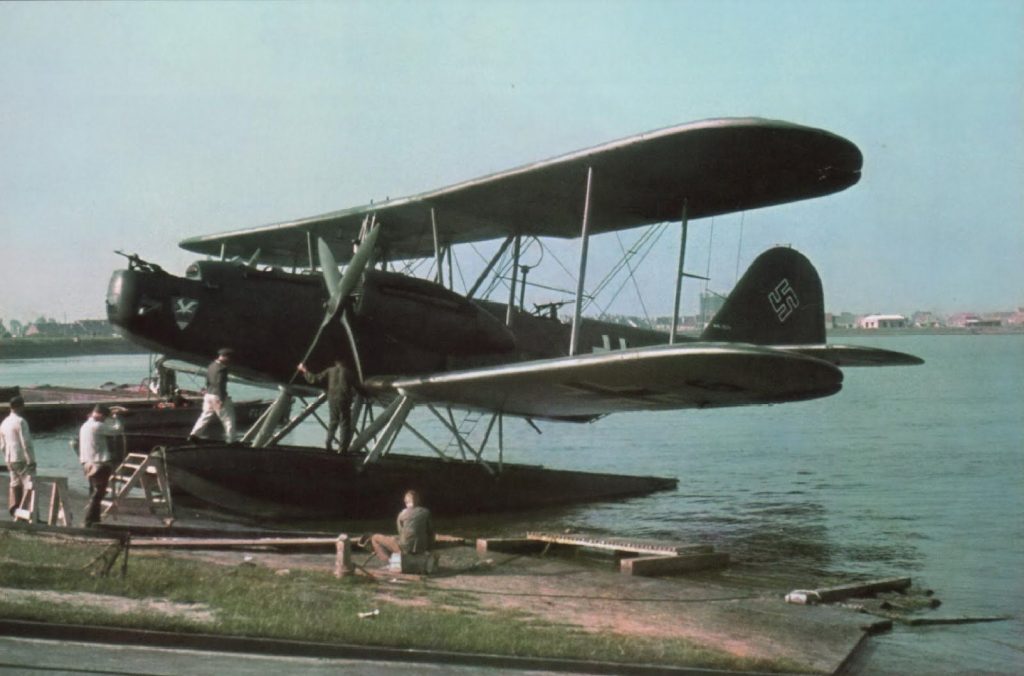
He-59A floatplane (1935). Only 142 of this model were available when WW2 broke out. Used at first for torpedo attacks and minelaying, it became a recce and SAR plane (search and rescue), gradually retired in 1942 and only retained for training.
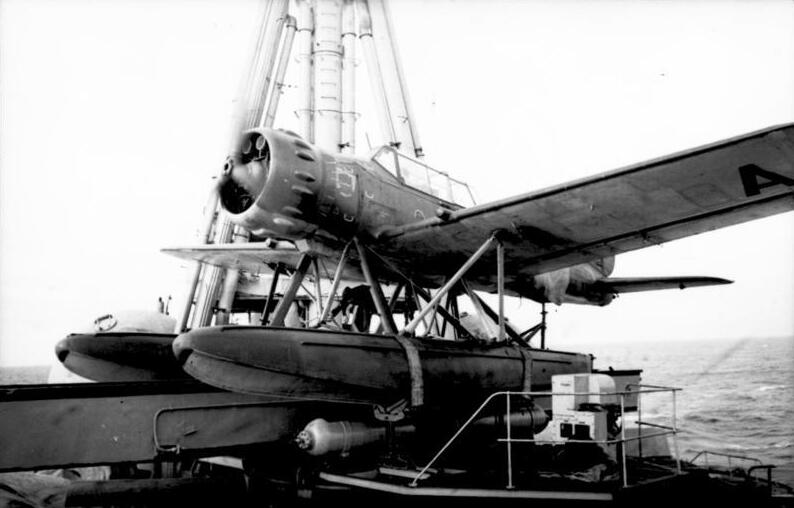
The nimble Arado 196 floatplane (1937), deployed on Kriegsmarine’s cruisers and battleships was also used for coastal reconnaissance, in particular from Norwegian coastal bases. 540 were produced until 1944. It was also used by the Bulgarian, Finnish and Romanian Air Forces.
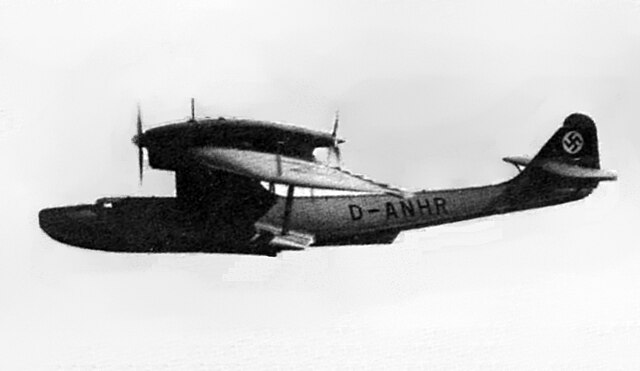
Dornier Do-18 G1, interwar seaplane used for SAR and reconnaissance. About 100 were still operational when WW2 broke out.
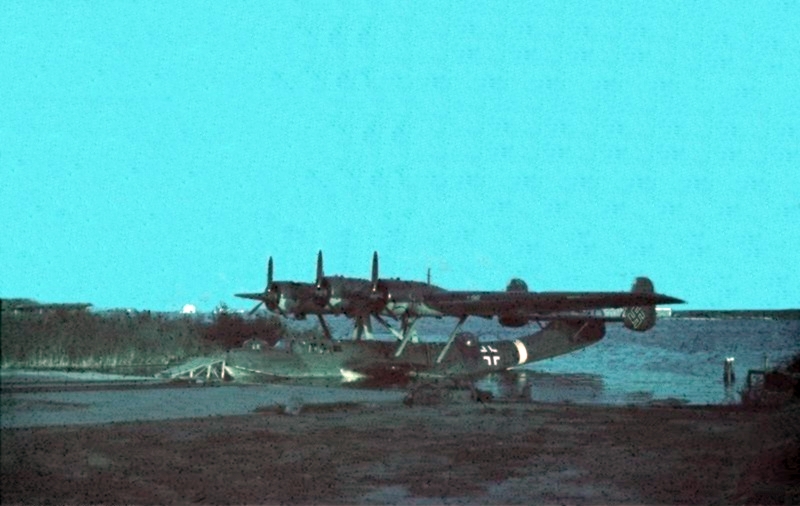
Dornier Do 24 T-1. The Do-24 was probably the most ubiquitous German long range SAR and patrol seaplane of the Luftwaffe in the Atlantic

Heinkel He-115 (1939): The standard Marine Floatplane of the Luftwaffe, used in torpedo attacks, SAR and recce until 1945. 138 were delivered and it was also used by other Axis aviations.
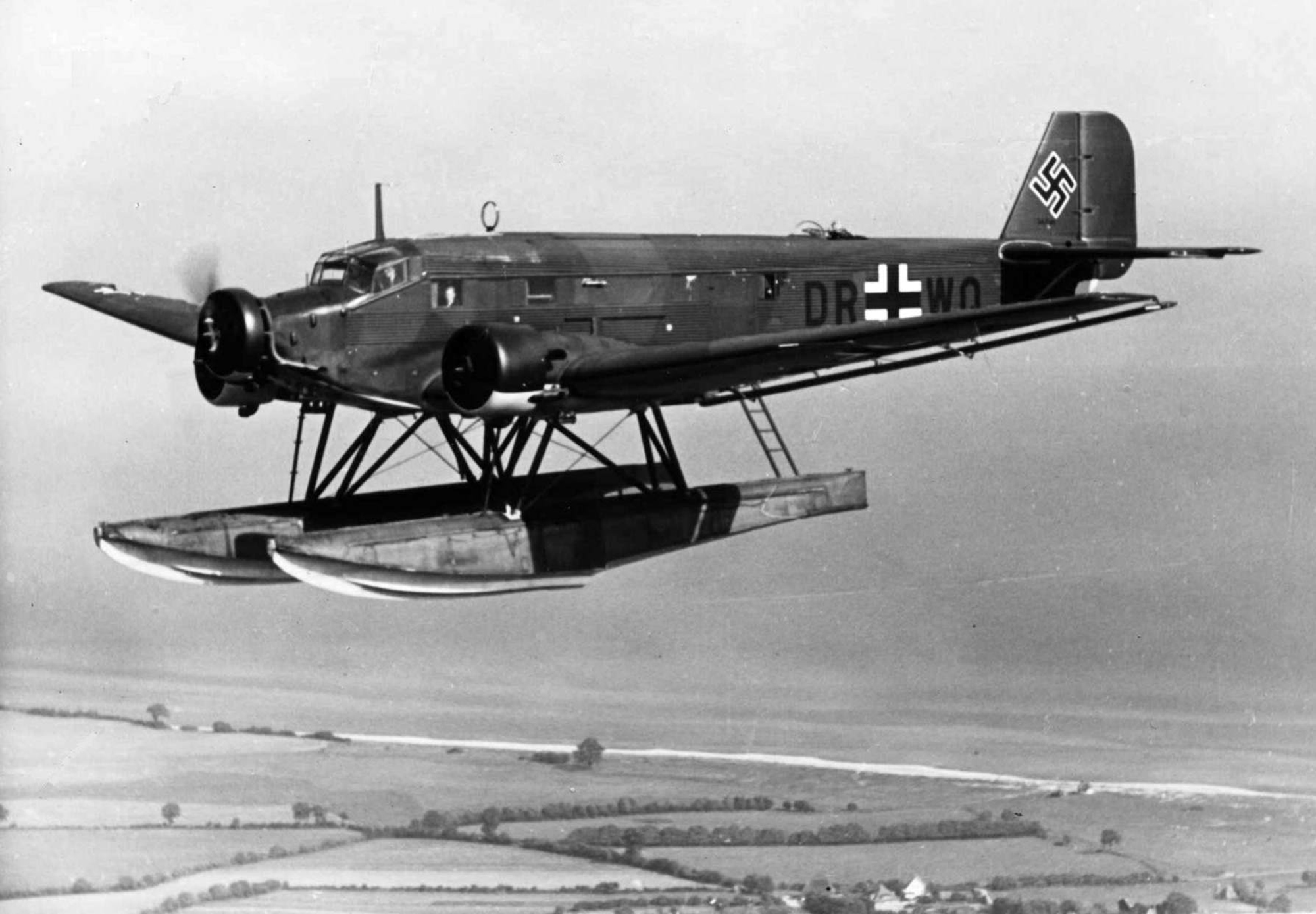
Junkers Ju-52 3MW: This variant of the ubiquitous “Tante Ju” (1932) was fitted with floats and used to carry mostly recce and transport missions. Below: A Ju 52 used by Minensuchgruppe Mausi, to degauss mines for the Kriegsmarine.

Blohm & Voss 222C, an impressive 6-engine long range transport and patrol seaplane. The even more enormous BV-238 never past the production stage.

Another depiction of the BV 222 by Ed Jackson.

Depiction of the gigantic BV 238 by Ed Jackson.
Land-based
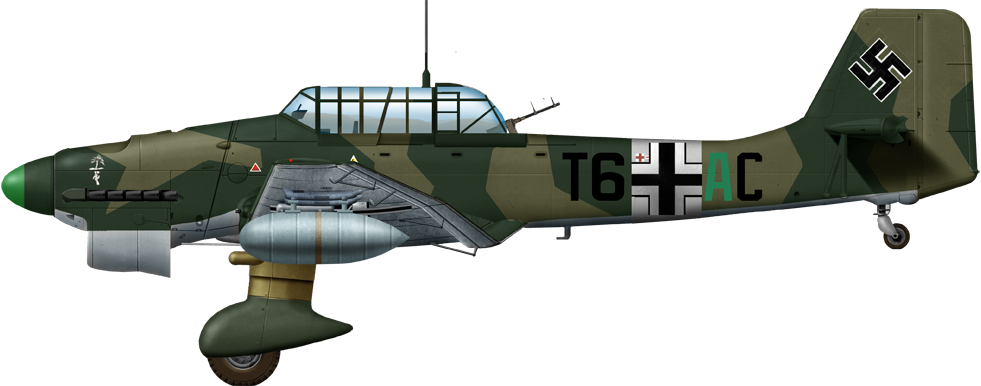
Junkers Ju-87 B2. The famous Ju-87 “Stuka” was widely used for antiship missions from land bases, where it excelled, being able to place a bomb in a funnel opening, notably in the confines of the Mediterranean, with great success, credited with more than 25 ships.

Junkers Ju-88 A-1, Stab KG 51. The other successful dive bomber of the Luftwaffe, the Ju-88 was even more produced and often used for antiship missions, especially in the Mediterranean but also the Atlantic thanks to its longer range. They took part the campaign of Norway, in attacks during the Dunkirk evacuation, the battle of Britain, focusing in harbors and coastal defenses like the Ju-87, and caused rampage to allied marine traffic and convoys throughout the Mediterranean and from Norway. It’s main advantages was its speed to escape FAA fighters, and precision bombing making it a deadly ship killer.
In fact many more models of the Luftwaffe took part punctually in coastal and shipping missions, see below.
Misc.
Focke-Achgelis fa-330: Usually deployed from destroyers, it was an early form of on-board helicopter but stayed largely experimental.
Luftwaffe models used for antiship and patrol operations
Luftwaffe Jäger (Fighters)
Luftwaffe Jägerflugzeug (“Air force fighters planes”) contracted into “Jäger” (fighters/hunters) were developed under cover as record/aerobatics and postal planes from 1933 under the will of Hitler, who wanted to break from the limitations of the Versailles treaty. Early tanks which were built in the Kuban, Soviet Russia, far from western observers, submarines in La Hague (Haegen) in the Netherlands, or in local yards, and planes in Sweden, Switzerland and Spain. A bomber can be camouflaged for some time as a passenger/postal plane and converted later, but fighters were more difficult to hide by their very agressive and high performances nature.
Thier role for naval operation was to escort bombers, the latter being tasked of allied objectives, whatever the front, from the Black sea to the Mediterranean. However the bulk of the air force being composed of medium bomber with limited range, fighters could be dispatched from more of less close land airfields. The only “naval fighter” developed in lenght was the Me-190K intended for the aircraft carrier Graf Zeppelin.
The birth of the post-1933 fighter branch saw early types deloped as biplanes, such as the trio in place from 1934, before monoplanes were introduced. These were the Heinkel 51, Arado 68 and Henschel 123. All three tipped their wings in blood during the Spanish civil war with the Legion Condor, bringing and amazing amount of experience and skills to German pilots. This aso allowed to test new concepts, and the Me 109 arrived just at the end of the war in 1938, ruling the skies wherever it was seen in action, which confirmed the path chosen by the RLM, despite some opposition to Willy Messerschmitt’s bird. In its place, the authorities would have preferred the Heinkel 112, which flew not long after the Me 109, in September 1935.
After comparative tests the 109 was chosen, to the dismay of Gunther’s team (Heinnkel). The failure of its successor, the He 112, at least found itself used in a nice propaganda coup which make believed the allies this was the main Luftwaffe bird.
The Me 109 was far from perfect, it was ungainly, less agile than others, its landing gear atrocious, but it was fast, easy to master, and cheap to produce. It seemed nothing could reach its level and soon Arado, Heinkel and Henschel were eclipsed as fighter makers, but a newcomer came into the fray, which prototype was chosen by the RLM as a complementary fighter-bomber to the 109. This was the amazing Focke-Wulf Fw.190, which first flew in 1939. It was supremely agile and had a radial engine, whereas all other German fighters used liquid-cooled inline engines, which made it more compact and simpler, but no less deadly and fast.
Although its production never matched the Me 109, it evolved into a quasi-invincible fighter as the Ta 152. The 109 nevertheless was incrementally improved until the Type K, and non of its alternative replacements were accepted (Me 209, 309…) before the match between early jets, at first contested by Heinkel and its model 280, won by the amazing Me 262, while Arado came back with a vengeance.
There is another aspect of fighter development which was mirrored in other countries in the late 1930s, before the war. It was generally assumed that fast bombers were relativeky immune, but by safety it was decided to develop a fighter capable of escorting the bombesr to their destination and back. The only way to achieve this was by using a twin-engine plane. The Jagdzestörer, or “fighter destroyer” was such a concept. In the end, the RLM competition was won, again, by Messerschmitt and its Me 110. Great hopes were placed upon it until the campaign of France, which showed it was neither fast or agile enough for the task.
Afterwards, it was quickly rebranded as a fighter bomber. So too was its successor, the failed 210 and the 410. The Junkers 88, developed as a dive bomber at first, was converted soon as a heavy fighter, and so were some sub-variants of the Dornier 17 and 217, for night fighting alongside other models like the late He 218 “Uhu” and the Dornier 335 Pfeil. The latter was the fastest piston engine fighter of the war, using a push-pull engine configuration and delta-shaped wings and cruciform tail.
It was a rocket with propellers and showed an alternative path to jets, which was not taken. As Germany crumbled under the weight of the bombs dropped by thousands of allied planes in 1944-45, a new generation of “miracle weapons”, a bit extreme, were developed. Such was the rocket plane Me 163, or the reusable/disposable Bachem Ba-349 Natter, or the easy to produce He 162 Salamander, or “Volksjäger”, supposed to be piloted by the brainwashed Hitlerjugend. One of the most amazing was the Horten Ho 229 (see later). This brief overview don’t dispense to see the many interesting prototypes that never made it to the production line over the war years. Some announced the 1950s jets.
Manufacturers
Arado
-Arado 68 (1933) – biplane fighter
Bachem
-Ba-349 Natter, a partly reusable rocket-powered fighter (1945), small pre-production
Blohm & Voss
This shipyard produce a variety of planes for the Luftwaffe, including its heaviest and largest Seaplanes.
-BV 40 (1944): Glider fighter prototypes
-BV 155: High altitude fighter prototypes
Dornier
-Do 335 Pfeil interceptor, 90 prod. 1944-45
Focke-Wulf
-Fw 187 Falke: prototype heavy fighter (1937)
-Fw 190: The “Butcher bird”, famous fighter-bomber, 20118 built until 1945
-Ta 152: By Kurt tank, inline engine derivative, a few built 1945.
-Ta 154: By the same, wooden-built heavy fighter (1943) small production.
Heinkel
-He 51: Main biplane fighter 1932-34.
-He 100: Monoplane fighter, small production 1938-39
-He 112: Monoplane fighter, small production (54) 1935-38
-He 162 Salamander: jet fighter (1945), around 300 in construction
-He 219 Uhu: Heavy fighter (1942-44, 270 built)
-He 280: Jet fighter, 8 prototypes (1941), after the He 178 proto (1940)
Junkers
-Ju 388 heavy fighter (1944-45, circa 100)
Messerschmitt
-Me 109: See the main article. 1935-45, +35,000 built
-Me 209, 309, 163, 262, prototypes & projects
Luftwaffe Jägdbombers (Fighter Bombers)
Arado
-Arado Ar 240 twin engine heavy fighter (1940-42), a few prototypes
Messerschmitt
Me 110 (1936)






Me 210 (1939)

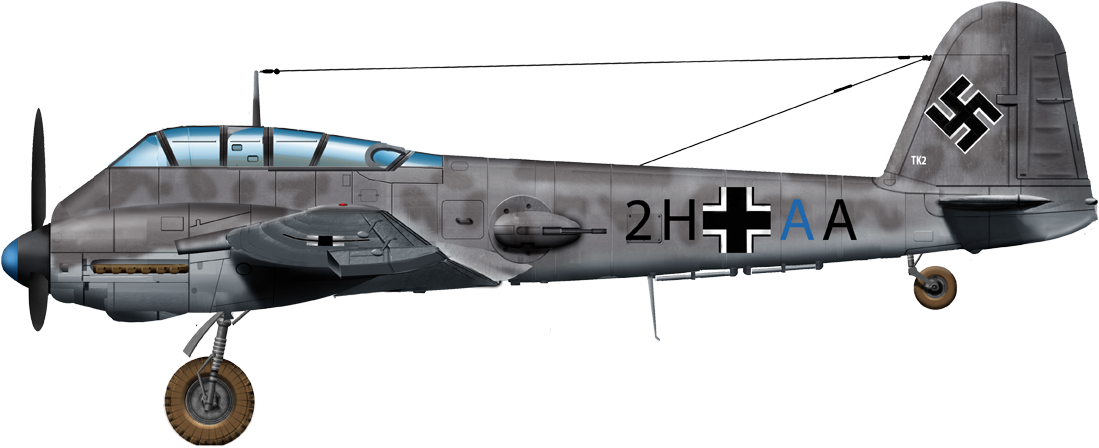

Me 410 Hornisse (1942)




Luftwaffe bombenflugzeug (Bombers)
Arado
-Arado Ar 234 “Blitz”, jet bomber (1944)
Junkers
-Ju 188 (1941, 1234 built) twin-engine (dive) bomber
-Ju 288 (1940, 22 pre-prod and prototypes), twin engine bomber
Heinkel
Heinkel 111 (1935), 6,508 built





Dornier

Founded as Dornier Flugzeugwerke by Claudius Dornier in Friedrichshafen, 1914, the company started as Dornier Metallbau, a sub-contractor, before acquiring the Flugzeugbau Friedrichshafen production facilities (Weingarten, Warnemünde, and the former Zeppelin shed at Manzell) in 1923 and starting its own planes. Success was soon met, with the Do-J “Wal”, a record-breaking all-metal seaplane. In 1929 he created the Do-X, the world’s largest plane. But its main products were Lufthansa’s Komet and Merkur.
Outside Altenrhein, Switzerland, the company also manufactured its planes in Italy, Spain, Japan and the Netherlands. In the early 1930s he replaced the famous Wal with the Do 18 and Do 24 which were equally successful and soon as courted after 1933 by the RLM headed by Goering and designed for them a bomber in disguise of a postal plane, nicknamed “The Flying Pencil”. The Do-17, with the He-111 and Ju-88 became the staple of the German bomber force. The Do-17 was declined into the Do-215, Do-217 and 317 at the end of the war. He also designed at that time the fastest piston-engie fighter of WW2, the Do-335 “Pfeil”, and worked on advanced jet aircraft and other projects such as the Dornier P.59, P.85, P.184, P.232, P.247, P.252, P.254, P 256 and P.273. The company resumed its activity postwar, was part of the Daimler Benze group in 1986 and became Fairchild Dornier in 1996. Now it is part of EADS and had diversified widely.
Dornier 17 (1934), 2,139 built

Dornier 17E-1

Dornier 17F-1

Dornier 17K-1

Dornier 17M-1

Dornier 17P-1

Dornier 17Z-2

Dornier 17Z-7 Kauz 1


Dornier 17Z-10 Kauz 2
Dornier 215 (1938), 105 built

Do-215B1

Do-215B1

Do-215B5 Kauz III

Do-215B5 Kauz III
Dornier 217 (1938), 1,925 built

Dornier 217E

Dornier 217J

Dornier 217J-1

Dornier 217K

Dornier 217M

Dornier 217m11

Dornier 217N

Dornier 217N-1
Dornier 317 (1976), 6 prototypes

Dornier 317
Luftwaffe Kampfflugzeug (attack planes)
Henschel
-Hs 123: Biplane dive bomber (1935-38, 250 built)
-Hs 129: Heavy attack plane (twin engine, 841 built 1939-42)
-Hs 132: 6 prototypes of jet-powered dive bomber
Junkers
Junkers Ju-87 “Stuka” (1935-44, 5710 built)
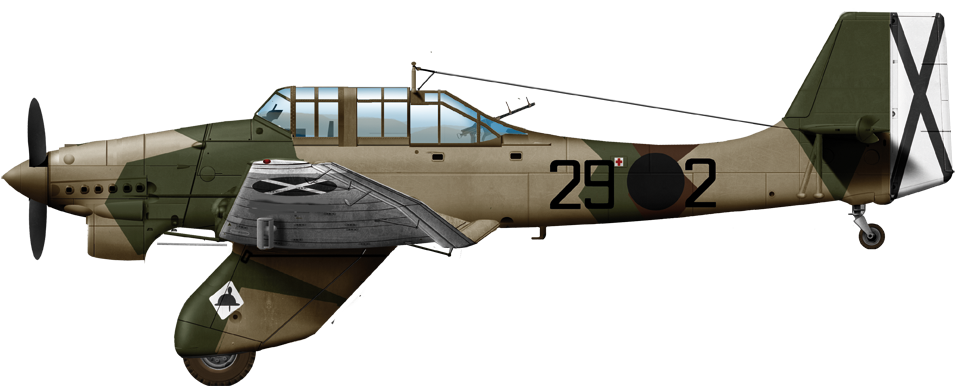
Ju 87A
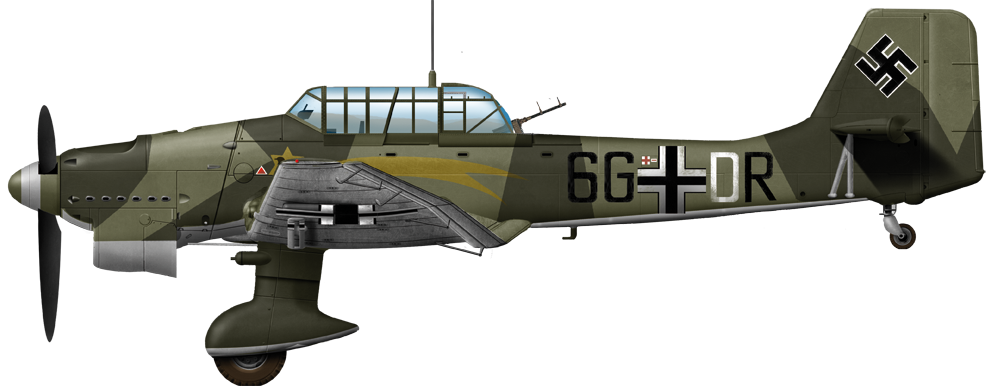
Ju 87B
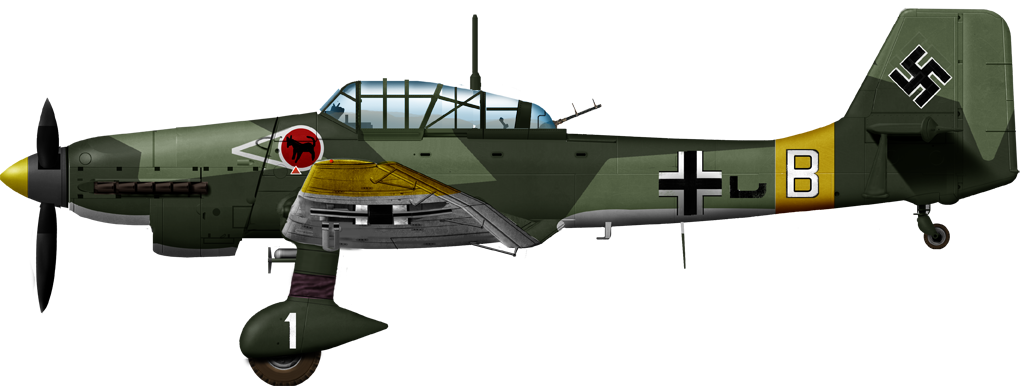
Ju 87D1
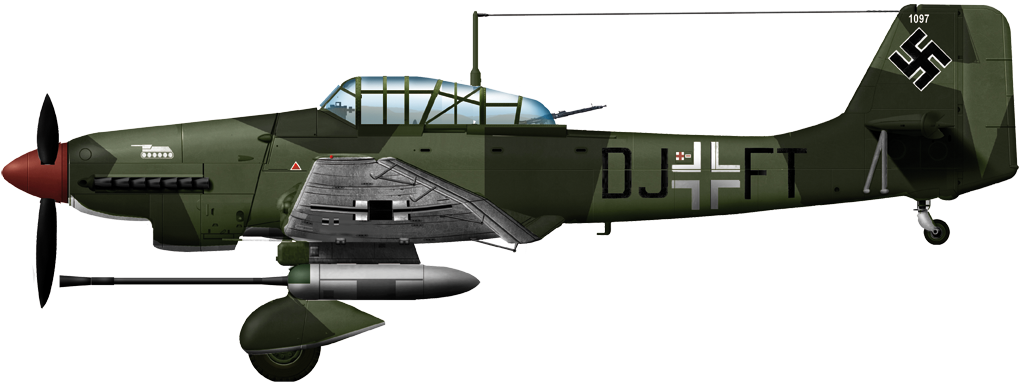
Ju 87G1
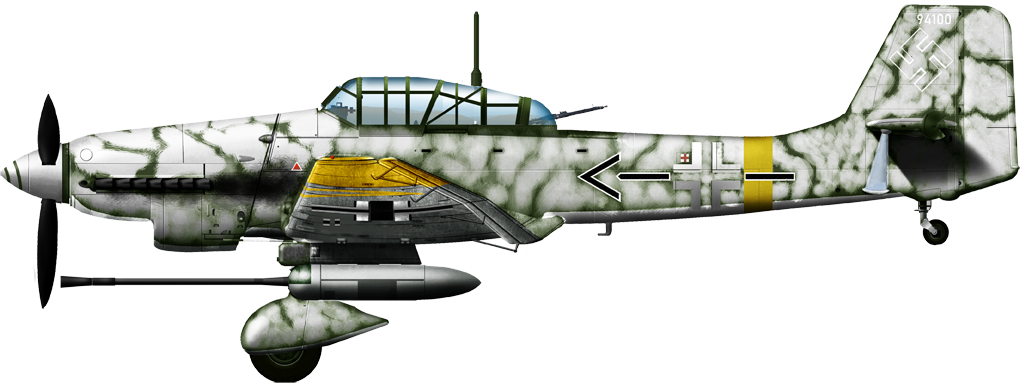
Ju 87G2

Ju 87R
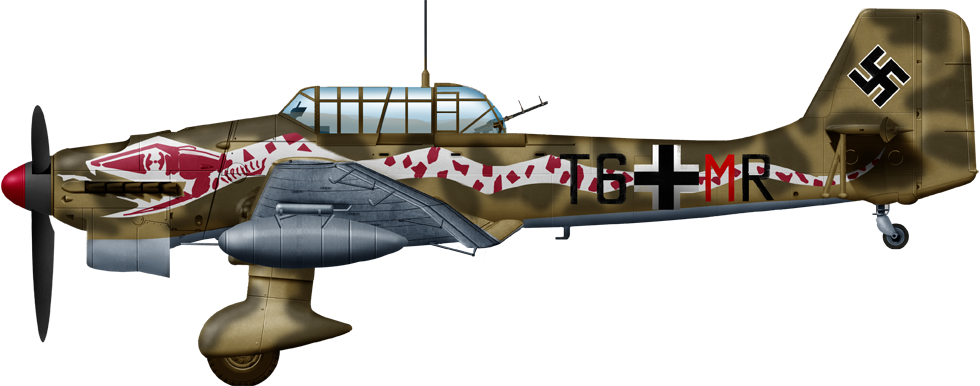
Ju 87R-2
-Junkers Ju-88 (1936-1943, 15,000 built)
Miscellaneous planes (recce, transport, training)
Arado
Focke-Wulf
-Fw 189 uhu (1938) 846 built, twin engine boom recce.
Read more:
Books
Links
feldgrau.com/ww2-german-kriegsmarine-naval-aviation


 Latest Facebook Entry -
Latest Facebook Entry -  X(Tweeter) Naval Encyclopedia's deck archive
X(Tweeter) Naval Encyclopedia's deck archive Instagram (@navalencyc)
Instagram (@navalencyc)





 French Navy
French Navy Royal Navy
Royal Navy Russian Navy
Russian Navy Armada Espanola
Armada Espanola Austrian Navy
Austrian Navy K.u.K. Kriegsmarine
K.u.K. Kriegsmarine Dansk Marine
Dansk Marine Nautiko Hellenon
Nautiko Hellenon Koninklije Marine 1870
Koninklije Marine 1870 Marinha do Brasil
Marinha do Brasil Osmanlı Donanması
Osmanlı Donanması Marina Do Peru
Marina Do Peru Marinha do Portugal
Marinha do Portugal Regia Marina 1870
Regia Marina 1870 Nihhon Kaigun 1870
Nihhon Kaigun 1870 Preußische Marine 1870
Preußische Marine 1870 Russkiy Flot 1870
Russkiy Flot 1870 Svenska marinen
Svenska marinen Søværnet
Søværnet Union Navy
Union Navy Confederate Navy
Confederate Navy Armada de Argentina
Armada de Argentina Imperial Chinese Navy
Imperial Chinese Navy Marinha do Portugal
Marinha do Portugal Mexico
Mexico Kaiserliche Marine
Kaiserliche Marine 1898 US Navy
1898 US Navy Sovietskiy Flot
Sovietskiy Flot Royal Canadian Navy
Royal Canadian Navy Royal Australian Navy
Royal Australian Navy RNZN Fleet
RNZN Fleet Chinese Navy 1937
Chinese Navy 1937 Kriegsmarine
Kriegsmarine Chilean Navy
Chilean Navy Danish Navy
Danish Navy Finnish Navy
Finnish Navy Hellenic Navy
Hellenic Navy Polish Navy
Polish Navy Romanian Navy
Romanian Navy Turkish Navy
Turkish Navy Royal Yugoslav Navy
Royal Yugoslav Navy Royal Thai Navy
Royal Thai Navy Minor Navies
Minor Navies Albania
Albania Austria
Austria Belgium
Belgium Columbia
Columbia Costa Rica
Costa Rica Cuba
Cuba Czechoslovakia
Czechoslovakia Dominican Republic
Dominican Republic Haiti
Haiti Hungary
Hungary Honduras
Honduras Estonia
Estonia Iceland
Iceland Eire
Eire Equador
Equador Iran
Iran Iraq
Iraq Latvia
Latvia Liberia
Liberia Lithuania
Lithuania Mandchukuo
Mandchukuo Morocco
Morocco Nicaragua
Nicaragua Persia
Persia San Salvador
San Salvador Sarawak
Sarawak Uruguay
Uruguay Venezuela
Venezuela Zanzibar
Zanzibar Warsaw Pact Navies
Warsaw Pact Navies Bulgaria
Bulgaria Hungary
Hungary

 Bundesmarine
Bundesmarine Dutch Navy
Dutch Navy Hellenic Navy
Hellenic Navy Marina Militare
Marina Militare Yugoslav Navy
Yugoslav Navy Chinese Navy
Chinese Navy Indian Navy
Indian Navy Indonesian Navy
Indonesian Navy JMSDF
JMSDF North Korean Navy
North Korean Navy Pakistani Navy
Pakistani Navy Philippines Navy
Philippines Navy ROKN
ROKN Rep. of Singapore Navy
Rep. of Singapore Navy Taiwanese Navy
Taiwanese Navy IDF Navy
IDF Navy Saudi Navy
Saudi Navy Royal New Zealand Navy
Royal New Zealand Navy Egyptian Navy
Egyptian Navy South African Navy
South African Navy






























 Ukrainian Navy
Ukrainian Navy dbodesign
dbodesign